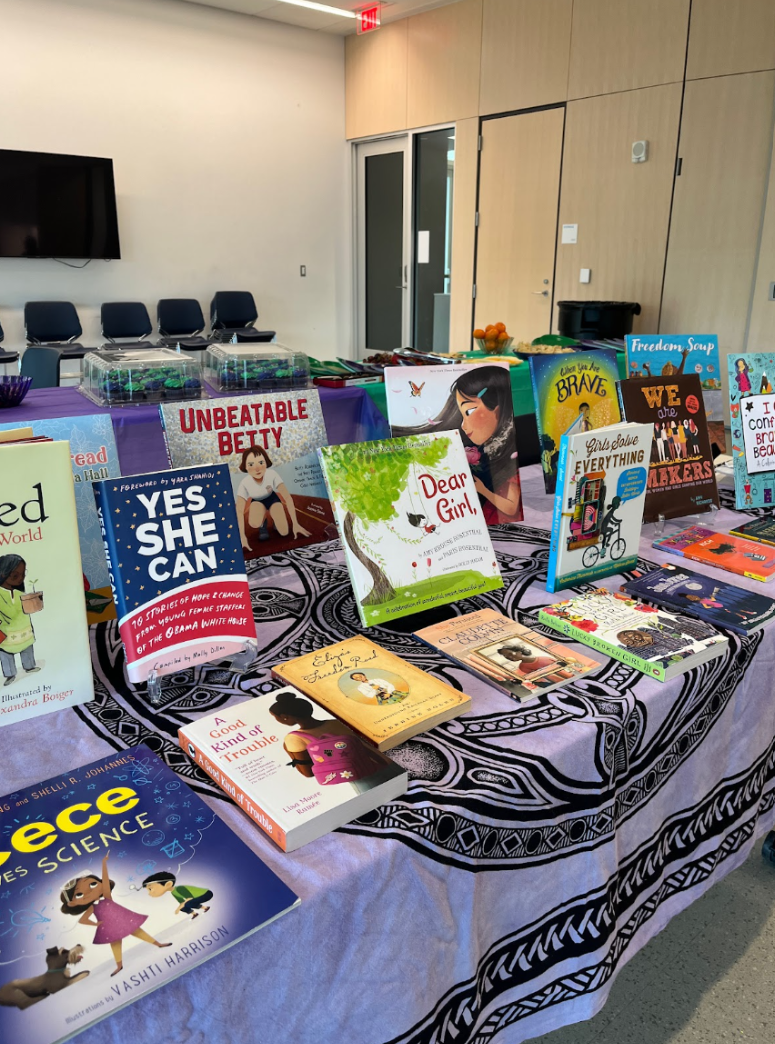You hear the exhibit before you see it. After walking through the imposing, vault-like doors that mark the entrance to The Block Museum’s main exhibition floor, you are immediately greeted by the sound of shakers and chanting. Look up to find the source of the noise and you see the shakers – made from cans, reclaimed wood and BBs suspended in the air. Next to this display is a piece made of woven wood, sturdily constructed and placed such that the light from a nearby spotlight casts a shadow reminding that “You Are On Native Land.”
This is the thesis of The Block’s new exhibition, “Woven Being,” which features over 80 works by 33 artists that center local Indigenous perspectives and creative processes. Textiles headline the exhibition, but it also features paintings, photo collages, multimedia pieces and sculptures. My personal favorite piece is “My Family’s Tennis Shoes,” a pair of customized Converse high-tops and a pair of baby shoes beautifully (and fashionably) decorated with intricate beadwork to create natural patterns and Native iconography. This piece of apparel art, produced by Kiowa artist Teri Greeves, was a highlight of my visit thanks to the way the blue of the shoes pops out of their glass case.

Many of the pieces were produced in the context of Indigenous erasure by the American government through predatory legislation and “diplomacy.” Issues like environmental pollution and land theft that historically deprived Native tribes of their homes also influenced the works. For example, one piece by Kelly Church, called “Looking Into The Future — What Would You Choose?” features three woven “Faberge Eggs” that hold samples of water, seeds and a flash drive containing reminders of the harm humanity has done to the environment by contaminating it with invasive species and oil. Another breathtaking show piece, “Water Carries Memory,” by James Wesaw, takes up almost an entire wall, reminding viewers about the preciousness of water with satin ribbons in vibrant shades of blue accompanied by shells, sand and paintings. “All water is connected,” the piece’s plaque states. And so too does one feel connected to water taking in this massive display.


The artwork also teaches viewers about actions the U.S. government took in the 19th and 20th centuries that disadvantaged Indigenous persons. One such piece calligraphically recreates the treaty that forced Native tribes onto reservations, while another represents an empowering parody of glossy, propagandistic posters released in the mid-20th century as part of the Urban Indian Relocation Act. This piece of legislation encouraged Indigenous people to move from reservations to urban centers promising jobs and opportunities that turned out to be nonexistent. These creative lessons shed light on the parts of United States and Chicagoland history that the powers that be might prefer stay dormant under the surface. As the Block Museum’s brief on the exhibition states,
“Indigenous voices have often been excluded from Chicago’s art histories. This silence is harmful. Guided by Indigenous collaborations, priorities, and voices, the exhibition foregrounds the perspectives of Indigenous artists currently based in the city and those from nations forcibly displaced from the area in the nineteenth century.”

The artists for Woven Being put the full might of their personal convictions and their pride in their Indigeneity into their pieces. Even if one didn’t look at the plaques that went with the pieces, one could still discern the messages conveyed through the art – their visual language is as clear as the rivers the artists reverently depict.

